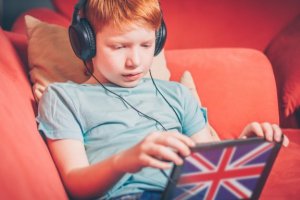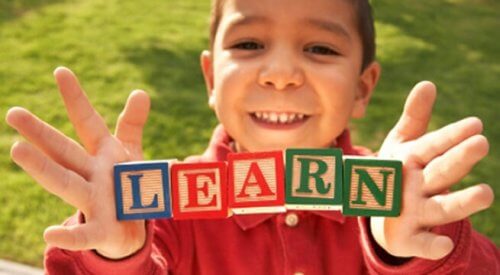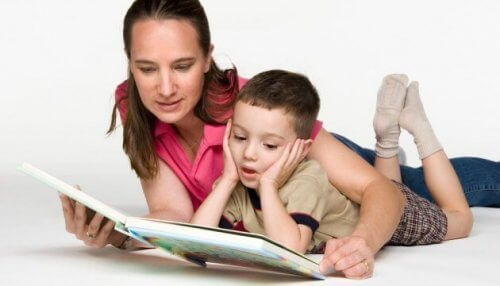Raising Bilingual Children: The OPOL Approach

OPOL, which stands for one parent, one language, is an approach in which each parent interacts with their children in a different language. This method allows children to practice both languages frequently and naturally. As a result, children learn two languages at the same time, very quickly.
Characteristics of bilingual children
Learning a second language may seem complex, but that’s not necessarily the case. If the right techniques are used while children are in the midst of their development, teaching a second language can be quite simple.
In an interview published in El Mundo, Jill Stribling, director and founder of English for Fun, addressed the issue. She stated that, though learning two languages simultaneously is ideal, it’s also possible to learn a second language later on.
According to Stribling, in countries like Holland and Belgium, inhabitants manage two languages simultaneously. What’s more, they usually start from a very young age. She also added, “Bilingual children tend to be more creative, their brains develop differently, and they have a higher self-esteem.”
According to Jill Stribling, forcing children to respond in a specific language can block their learning. She recommends that parents be patient and give children the time they need to learn.
How to apply the OPOL approach with children
Daycare centers and preschools are ideal places for children to learn a second language. Therefore, applying the OPOL approach can be effective here. You can also apply it to the person responsible for caring for your child.
Below, we’ll share some guidelines that you should keep in mind when starting out with this approach:
Use videos and songs
To begin applying the OPOL approach, you must use videos, songs and even children’s programs in the target language. This way, children can recognize the language from a young age. This also helps them identify different accents.

Use both languages throughout the day
To apply the OPOL approach to bilingual parenting correctly, parents should expose their children to both languages equally. Of course, making an exact calculation of the use of each language is complex. But parents should aim at using the second language at least 30% of the time, or at least 5 hours a day.
The importance of context
It’s important that children learn to relate a specific environment or person with one of the languages. That way, their brains can recognize when to focus on each of their languages.
Apply routines correctly
Routines are widely necessary for the learning of a new language. Parents should try to make sure their children don’t spend more than two days without practicing their second language.
Remember that children are learning every single day. That’s why it’s important to reinforce their learning with daily tasks and various activities.
Activities for reinforcing language
The newspaper El Mundo recommends some techniques that parents can use to make language learning faster and more effective. These are some of their recommendations:
- With the modern options of language change, it’s much easier for children to see programs in different languages. This is extremely beneficial during this stage.
- Watch movies in the target language. This will reinforce the language and help children identify it faster.
- Read books in the target language. Parents can use different books according to their children’s age. Audio books are also very effective.

- Carry out fun and simple activities. In relation to what children learn at school, parents can also apply activities in the home. For example, if a child is learning colors at school, then parents can reinforce this learning at home through games.
- If each parent speaks to their child exclusively in one language, the child will get used to both languages much faster.
- Download applications in the target language for children to use. With technology being such an important part of life today, parents have an endless array of activities and games for children at their fingertips.
At first, it’s normal for children who are learning two languages at once to mix up words sometimes. Patience and practice will be essential in applying the OPOL method effectively.
OPOL, which stands for one parent, one language, is an approach in which each parent interacts with their children in a different language. This method allows children to practice both languages frequently and naturally. As a result, children learn two languages at the same time, very quickly.
Characteristics of bilingual children
Learning a second language may seem complex, but that’s not necessarily the case. If the right techniques are used while children are in the midst of their development, teaching a second language can be quite simple.
In an interview published in El Mundo, Jill Stribling, director and founder of English for Fun, addressed the issue. She stated that, though learning two languages simultaneously is ideal, it’s also possible to learn a second language later on.
According to Stribling, in countries like Holland and Belgium, inhabitants manage two languages simultaneously. What’s more, they usually start from a very young age. She also added, “Bilingual children tend to be more creative, their brains develop differently, and they have a higher self-esteem.”
According to Jill Stribling, forcing children to respond in a specific language can block their learning. She recommends that parents be patient and give children the time they need to learn.
How to apply the OPOL approach with children
Daycare centers and preschools are ideal places for children to learn a second language. Therefore, applying the OPOL approach can be effective here. You can also apply it to the person responsible for caring for your child.
Below, we’ll share some guidelines that you should keep in mind when starting out with this approach:
Use videos and songs
To begin applying the OPOL approach, you must use videos, songs and even children’s programs in the target language. This way, children can recognize the language from a young age. This also helps them identify different accents.

Use both languages throughout the day
To apply the OPOL approach to bilingual parenting correctly, parents should expose their children to both languages equally. Of course, making an exact calculation of the use of each language is complex. But parents should aim at using the second language at least 30% of the time, or at least 5 hours a day.
The importance of context
It’s important that children learn to relate a specific environment or person with one of the languages. That way, their brains can recognize when to focus on each of their languages.
Apply routines correctly
Routines are widely necessary for the learning of a new language. Parents should try to make sure their children don’t spend more than two days without practicing their second language.
Remember that children are learning every single day. That’s why it’s important to reinforce their learning with daily tasks and various activities.
Activities for reinforcing language
The newspaper El Mundo recommends some techniques that parents can use to make language learning faster and more effective. These are some of their recommendations:
- With the modern options of language change, it’s much easier for children to see programs in different languages. This is extremely beneficial during this stage.
- Watch movies in the target language. This will reinforce the language and help children identify it faster.
- Read books in the target language. Parents can use different books according to their children’s age. Audio books are also very effective.

- Carry out fun and simple activities. In relation to what children learn at school, parents can also apply activities in the home. For example, if a child is learning colors at school, then parents can reinforce this learning at home through games.
- If each parent speaks to their child exclusively in one language, the child will get used to both languages much faster.
- Download applications in the target language for children to use. With technology being such an important part of life today, parents have an endless array of activities and games for children at their fingertips.
At first, it’s normal for children who are learning two languages at once to mix up words sometimes. Patience and practice will be essential in applying the OPOL method effectively.
All cited sources were thoroughly reviewed by our team to ensure their quality, reliability, currency, and validity. The bibliography of this article was considered reliable and of academic or scientific accuracy.
- Diario, El Mundo. (2015). ¿Bilingües? Cómo enseñar otro idioma a los niños sin forzarlos. Diario, El Mundo.
- Garabaya, Celia. (2016). Método bilingüe Opol para los niños. Tribuna Salamanca.
This text is provided for informational purposes only and does not replace consultation with a professional. If in doubt, consult your specialist.








